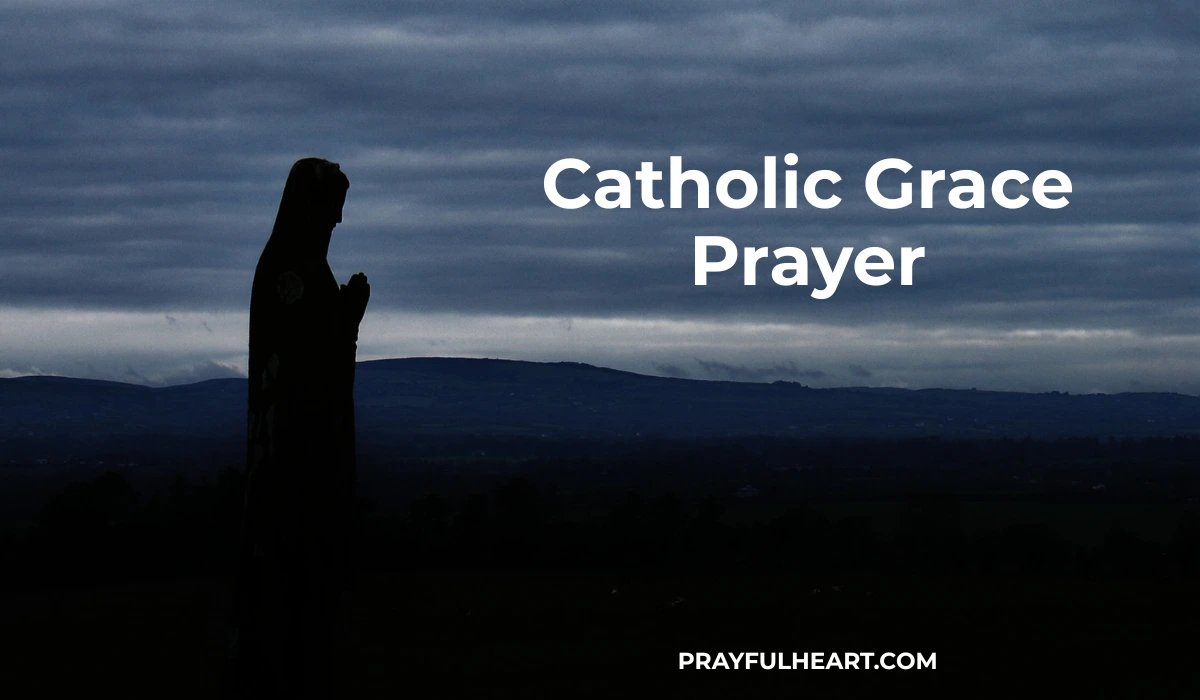A Catholic grace prayer is a simple but powerful expression of gratitude. It is often said before and after meals to thank God for His blessings. This tradition has been practiced for centuries and remains a vital part of Catholic faith and daily life. In 2025, many families continue to embrace grace prayers, using them to deepen their connection with God.
Understanding Catholic Grace Prayer
A Catholic grace prayer focuses on acknowledging God’s provision. When we say grace, we recognize that all good things come from Him. It helps us pause in our busy lives to remember God’s presence in every moment. Prayers before meals are simple, yet they foster a spirit of gratitude that extends beyond the dining table.
Grace prayers also build a habit of faith in children. Teaching them to thank God for daily blessings strengthens their spiritual foundation. This prayer is not limited to meals at home; it is equally meaningful in schools, gatherings, and church events.
The Importance of Catholic Grace Prayer
The Catholic grace prayer holds spiritual and social importance. It unites families and communities in shared faith. Saying grace before eating reminds us to be humble and thankful for even small gifts. It also helps us reflect on those who are less fortunate and encourages acts of charity.
Grace prayers can also be moments of reflection. In our fast-paced world, these short prayers provide peace. They slow us down and give us time to focus on God’s blessings. This habit enriches both personal devotion and family life.
Common Catholic Grace Prayers

The Catholic grace prayer remains a cherished part of daily Catholic life. The most common version before meals is: “Bless us, O Lord, and these Thy gifts, which we are about to receive from Thy bounty, through Christ our Lord. Amen.
Catholic grace prayers vary slightly in wording but share the same intent. The most well-known prayer is:
“Bless us, O Lord, and these Thy gifts, which we are about to receive from Thy bounty, through Christ our Lord. Amen.”
This prayer is short, making it easy to remember. Another prayer said after meals is:
“We give Thee thanks, Almighty God, for all Thy benefits, Who livest and reignest, world without end. Amen.”
These prayers are often taught to children during catechism classes. They are simple enough for young learners while deeply rooted in Catholic tradition.
Read more: The crow wicked prayer
Key Catholic Grace Prayers
| Prayer Type | Text |
|---|---|
| Grace Before Meals | Bless us, O Lord, and these Thy gifts, through Christ our Lord. Amen. |
| Grace After Meals | We give Thee thanks, Almighty God, world without end. Amen. |
These two prayers form the core of daily Catholic mealtime traditions.
Catholic Grace Prayer in Modern Times
In 2025, grace prayers are more than rituals. Many families personalize their prayers while keeping the essence intact. Some include special intentions, thanking God for health, family, or specific blessings. In schools and parishes, grace prayers are used to teach children about gratitude and faith.
With digital prayer resources, many people access printable cards or mobile apps for grace prayers. This makes it easier to keep the tradition alive in modern homes. Families use these resources to bring prayer into daily routines.
Teaching Children Catholic Grace Prayer
Introducing children to a Catholic grace prayer is an important step in their faith journey. Parents often teach the short version first and gradually explain its meaning. When children learn why we say grace, they develop a stronger understanding of faith.
Catechism classes also reinforce these prayers. Teachers often use visual aids, songs, or printable prayer cards. This helps children memorize and enjoy saying grace. Building this habit early helps them remain connected to their faith throughout life.
Catholic Grace Prayer During Lent and Holy Days
During Lent or special feasts, families often say grace with added reflections. For example, before meals during Lent, prayers may include petitions for strength in fasting. On Easter, grace prayers often express joy for Christ’s resurrection. This seasonal adaptation keeps prayer meaningful and connected to the liturgical calendar.
In 2025, many parishes also encourage communal grace prayers at events. This shows how Catholic faith remains vibrant and community-centered.
Read more: Prayer shawl patterns
The Spiritual Impact of Grace
A Catholic grace prayer nurtures humility and gratitude. It reminds us that meals are blessings, not to be taken for granted. It also builds compassion, as we remember those who go hungry. These moments inspire generosity, urging Catholics to help others as an act of faith.
Praying grace is also an act of witness. When said publicly, it shows devotion and can inspire others to do the same. It strengthens community bonds and reflects living faith in everyday moments.
| Aspect | Details |
| Purpose | Express gratitude and recognize God’s blessings |
| Timing | Said before and after meals |
| Key Prayers | “Bless us, O Lord” and “We give Thee thanks” |
| Importance in 2025 | Strengthens faith, family, and community bonds |
Frequently Asked Questions (FAQs)
What is the purpose of a Catholic grace prayer?
It is to thank God for His gifts and acknowledge His presence in our lives.
When should Catholic grace prayers be said?
They are typically recited before and after meals, both at home and in gatherings.
Can grace prayers be personalized?
Yes, many families add personal intentions while keeping the traditional form.
Why teach children Catholic grace prayer?
It helps them develop gratitude, faith, and a sense of connection to God.
Final Thoughts
The Catholic grace prayer is a timeless tradition that enriches faith and daily life. It invites families and individuals to pause and thank God for His blessings. In 2025, this practice remains vital, bringing people closer to God and fostering gratitude. Teaching children this simple yet profound prayer instills values of faith and humility early in life. Grace prayers offer peace in busy routines, linking spirituality to ordinary moments. They also strengthen family and community ties, uniting hearts in shared devotion.
Whether said before or after meals, these prayers are a reminder of God’s love and provision. Embracing this tradition daily deepens our relationship with God and nurtures gratitude, faith, and joy in every Catholic home.

